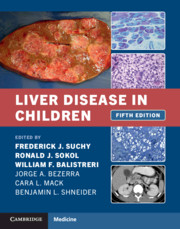Book contents
- Liver Disease in Children
- Liver Disease in Children
- Copyright page
- Contents
- Contributors
- Preface
- Section I Pathophysiology of Pediatric Liver Disease
- Section II Cholestatic Liver Disease
- Section III Hepatitis and Immune Disorders
- Chapter 17 Hepatitis A and Hepatitis E Virus in Children
- Chapter 18 Hepatitis B Virus Infection in Children
- Chapter 19 Hepatitis C Virus Infection in Children
- Chapter 20 Autoimmune Hepatitis in Children
- Chapter 21 Sclerosing Cholangitis in Children
- Chapter 22 Drug-Induced Liver Disease in Children
- Chapter 23 Liver Disease in Immunodeficiencies in Children
- Section IV Metabolic Liver Disease
- Section V Other Considerations and Issues in Pediatric Hepatology
- Index
- References
Chapter 23 - Liver Disease in Immunodeficiencies in Children
from Section III - Hepatitis and Immune Disorders
Published online by Cambridge University Press: 19 January 2021
- Liver Disease in Children
- Liver Disease in Children
- Copyright page
- Contents
- Contributors
- Preface
- Section I Pathophysiology of Pediatric Liver Disease
- Section II Cholestatic Liver Disease
- Section III Hepatitis and Immune Disorders
- Chapter 17 Hepatitis A and Hepatitis E Virus in Children
- Chapter 18 Hepatitis B Virus Infection in Children
- Chapter 19 Hepatitis C Virus Infection in Children
- Chapter 20 Autoimmune Hepatitis in Children
- Chapter 21 Sclerosing Cholangitis in Children
- Chapter 22 Drug-Induced Liver Disease in Children
- Chapter 23 Liver Disease in Immunodeficiencies in Children
- Section IV Metabolic Liver Disease
- Section V Other Considerations and Issues in Pediatric Hepatology
- Index
- References
Summary
The liver plays an important role in the immune defense because of its central position adjacent to the gastrointestinal tract, representing the first line of defense against ingested or translocated pathogens and various antigens from diet.
- Type
- Chapter
- Information
- Liver Disease in Children , pp. 383 - 400Publisher: Cambridge University PressPrint publication year: 2021

